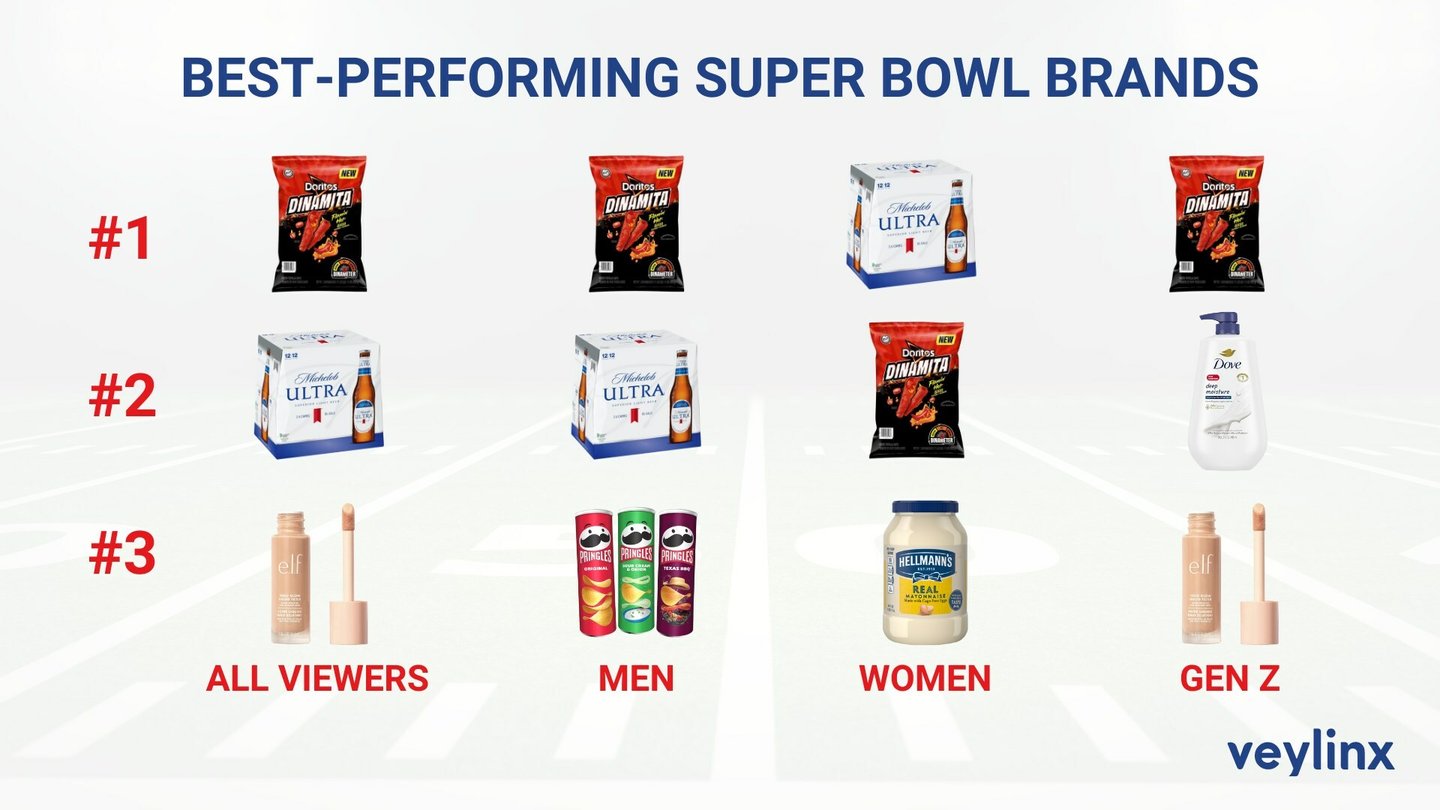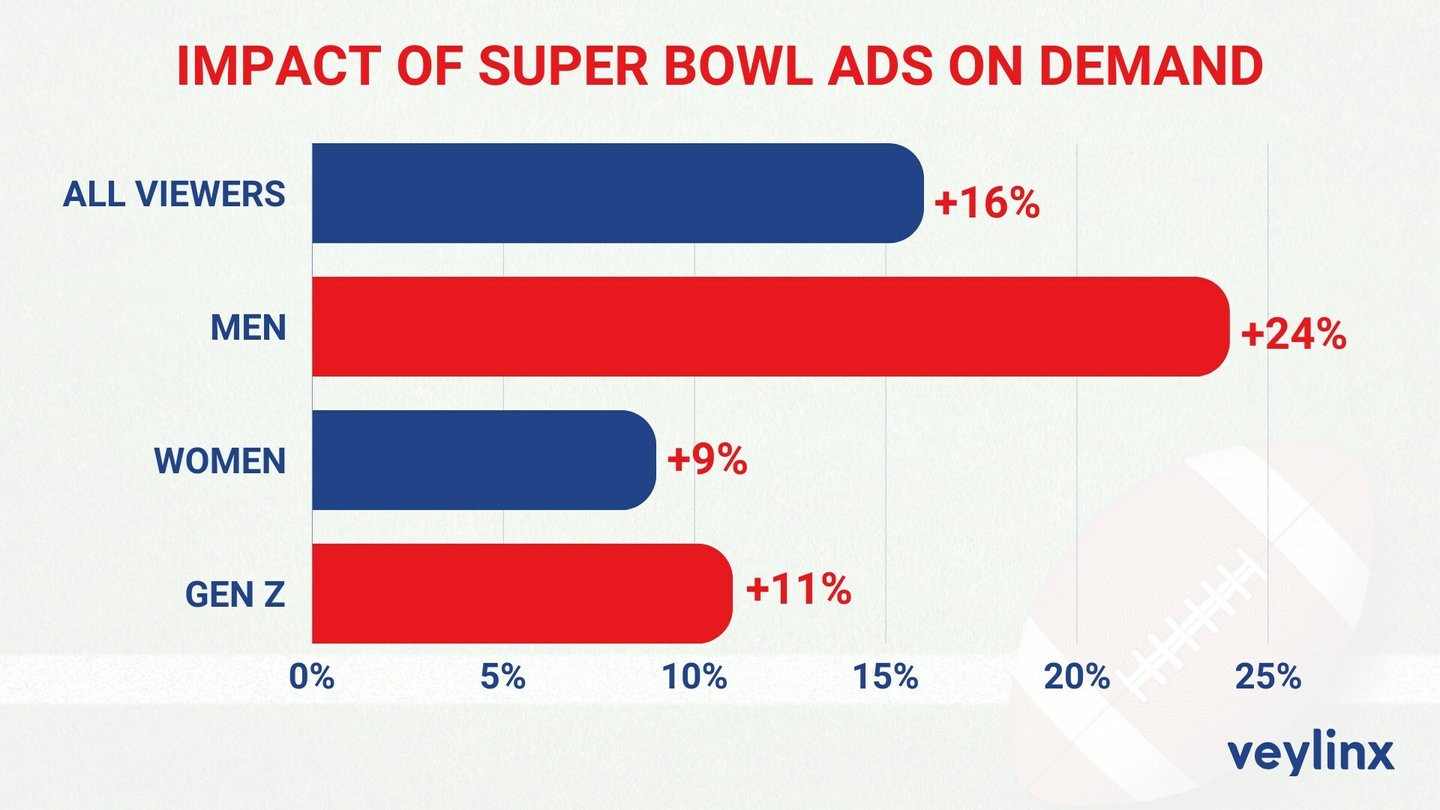Study: 2024 Big Game Commercials Drove Demand
Behavioral research company Veylinx conducted its second annual consumer study evaluating whether Super Bowl commercials boost consumer demand for the products advertised.
The results show that 2024 Big Game advertising fueled a 16.4% increase in overall product demand among viewers, with Frito-Lays Doritos Dinamita, Anheuser-Busch’s Michelob Ultra and E.l.f. Beauty’s Halo Glow outperforming the other brands tested.
The study again indicated that Super Bowl commercials do impact consumer purchase behavior. According to the study results, the overall increase in consumer demand this year was driven by men: their demand for the products advertised increased by 24%, while demand from women rose by 9%.
The “Taylor Swift effect,” as many have dubbed, could be responsible for the increase in overall demand among Gen Z viewers, according to a media release from Veylinx. This year, Gen Z's demand for products advertised increased by 11% — last year, demand actually shrank among this age group — with 22% of Gen Zers reporting that this was their first time watching the Super Bowl. The top performing commercials among Gen Z were Doritos Dinamita, Unilever’s Dove and E.l.f. Halo Glow.
The Doritos Dinamita commercial aired during the third quarter of Super Bowl LVIII after the brand teased the commercial for weeks in advance. It featured actors Jenna Ortega and Danny Ramirez alongside two feisty fictional characters, Dina and Mita, in an exciting pursuit of the new Dinamita flavors introduced earlier this year.
Veylinx's proprietary methodology for this study — which measures actual demand rather than intent — tested purchase behavior during the week before the Super Bowl and again after. The research focused on measuring the change in consumer demand for eight brands with Super Bowl ads: Michelob Ultra, Hellmann's Mayo, Kellogg's Pringles, E.l.f. Beauty, The Hershey Co.’s Reese's, Dove, Doritos Dinamita and PepsiCo’s Mtn Dew Baja Blast.
There was also a halo effect among some brands in the same product categories as Super Bowl advertisers, according to the release. Overall, the control group of non-advertisers experienced a 0.5% decrease in demand. However, Frito-Lay’s Lays Stax, Nestle’s Kit Kat, Beiersdorf Nivea body wash and Mtn Dew original all experienced increased demand — potentially benefiting from the greater exposure for their product categories during the game.
Additional Findings
Study participants also answered a series of follow-up questions about their motivations and behavior. The most popular reason given for watching the Super Bowl was the game itself (54% of participants), followed by pregame and halftime entertainment (19%), the commercials (14%), the social aspect (5%) and a desire to see Taylor Swift (5%).
Among all age groups, 14% of people said this was the first Super Bowl they had ever watched. While 7% said they drank too much during the celebration, 56% said they didn't drink any alcohol at all during the Super Bowl. A quarter of Americans said they ate too much food during the game.
Methodology
Veylinx studied the behavior of 1,604 U.S. consumers pre- and post-Super Bowl LVIII. Unlike typical surveys where consumers are simply asked about their purchase intent, Veylinx measures whether consumers will pay for a product through a real bidding process. Consumers reveal their true willingness to pay by placing sealed bids on products and then answering follow-up questions.








